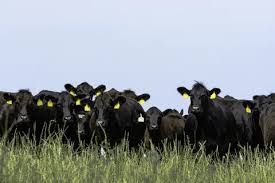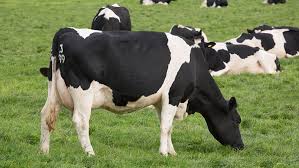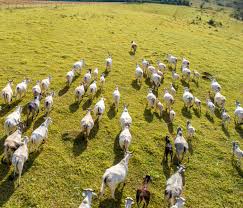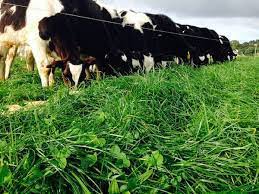The rate of growth of forages in a pasture is directly related to how well the pasture has been managed, not only during the recent grazing periods but also during the previous winter and throughout the prior grazing season.
Pastures that were managed poorly in the prior year will not respond as quickly and will not produce an optimal quantity of forage in the current year. All other factors being equal, better pasture management will lead to more forage production, up to the capability of the soils and site conditions.
In addition to better pasture production, a managed grazing system significantly enhances the soil, water, and wildlife resources. A greater percentage of rainfall will infiltrate into the soil rather than running off the pasture.
Any runoff that does occur will be cleaner, carrying little or no sediment. Soil erosion will be reduced, and net soil building may occur. Habitat for wildlife, particularly songbirds, will be enhanced by the diversification of cover types, height, and stages of maturity.
Management Strategies for Improved Pasture Productivity
The management strategies discussed in this article can be tailored to the pasture situation, considering the current forages and those desired in the future, as well as the kind and class of livestock using the pastures.
Read Also: How to Market your Matured Fishes for Profit
Identification and Managing Sensitive Areas in Pastures

Many pastures are used for grazing due to severe environmental limitations that prevent the use of the area for cropland. These limitations include wetness, droughtiness, steep slopes, stoniness, and south/southwest slope exposure. Sensitive areas that are commonly found and delineated in pastures include:
1. Wooded areas, including savannas
2. Native prairie remnants
3. Steep slopes
4. Shallow or thin soils
5. Organic soils
6. Springs or seeps
7. Riparian areas
8. Wetlands, ponds, and lakes
9. Streams and rivers
10. Areas prone to flooding
11. Conservation structures
12. Areas with threatened or endangered species
13. Areas with archaeological significance
Subdividing Pastures for Better Forage Management
Subdividing the pasture into several paddocks is one of the most important steps to improve pasture yield. This practice allows the forages on most of the pasture to rest while improving the efficiency of forage harvest in the grazed area.Two common methods of subdividing pastures include “strip grazing” and “set paddocks.”
Terminating Grazing at the Right Time

Grazing below a specified residual stubble height (4 inches for tall cool-season grasses and 2 inches for short cool-season grasses) will remove active growing points, causing the grasses to regrow from buds on the roots.
This regrowth requires an additional 7-10 days of growing time and weakens the roots by drawing on stored food reserves.
Managing Pastures Before a Killing Frost
Allowing forages to regrow before a killing frost is an important pasture management strategy. New buds, which will be next year’s grass shoots, develop in the fall.
Pastures that are allowed to rest for 30 days prior to a killing frost will emerge from dry-season dormancy 7-10 days earlier in the rainy season, significantly extending the grazing season.
Sacrificial Paddock Use and Management
A sacrificial paddock is a designated area within the pasture that is intentionally used as a holding area while the remainder of the paddocks rest. This practice is useful when soil conditions are too wet or dry, or when forage production has diminished, and no paddock is ready to graze.
Sacrificial paddocks should be selected carefully. Sensitive areas, areas prone to erosion, and those difficult to rejuvenate or access with feed equipment should not be used. Additionally, water for livestock must be available.
Read Also: How to Control Cannibalism among Fishes
Managing Forage Balance Throughout the Grazing Season

Managing the variable rate of forage growth is one of the most challenging aspects of grazing systems. To balance forage availability on a monthly basis, the following strategies are commonly employed:
1. Using a rotational grazing system to reduce the depth of the midsummer slump and delay the onset of reduced forage production.
2. Utilizing warm-season grasses to fill in the forage gap that occurs in midsummer for cool-season forage-based systems.
3. Planting annually seeded crops as forage during the summer.
4. Grazing hay fields that have been harvested for the first crop instead of taking a second crop.
5. Harvesting some paddocks as hay in the spring, during rapid forage growth.
Do you have any questions, suggestions, or contributions? If so, please feel free to use the comment box below to share your thoughts. We also encourage you to kindly share this information with others who might benefit from it. Since we can’t reach everyone at once, we truly appreciate your help in spreading the word. Thank you so much for your support and for sharing!
Read Also: 12 Management Tips for better Poultry Performance Potential






